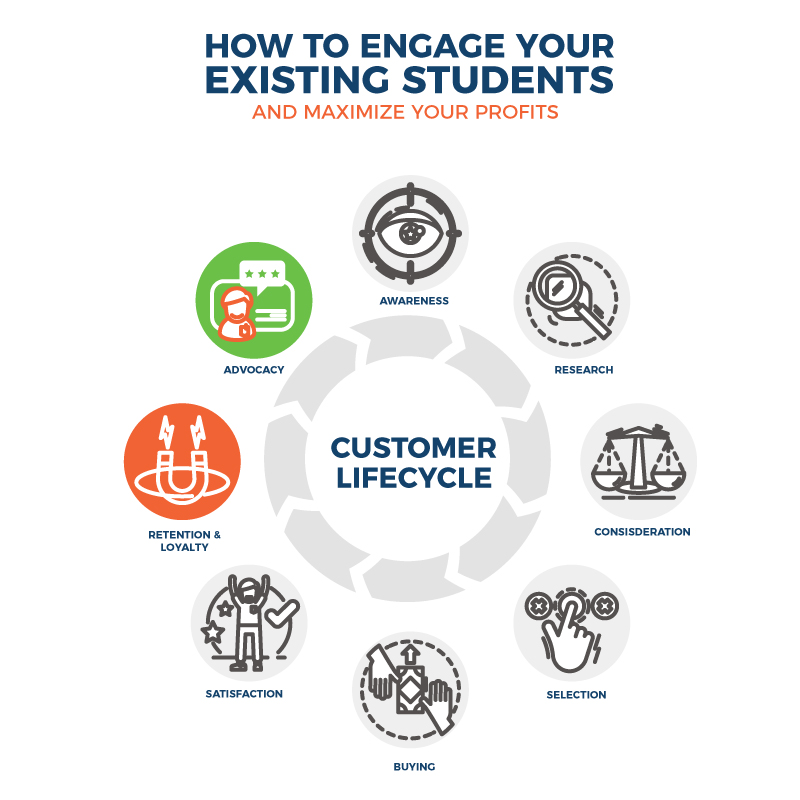Are you tired of wasting money on securing new students, only to find out that you have lost out on old ones?
Are you discouraged by the fact that your current students are not completing your online courses?
Do you feel all your efforts were in vain, as students who drop out are unable to benefit from the content you’ve worked so hard to create?
I get you! I’ve been there – and most online course creators at some point in their journey have been there too!
Unfortunately, low course completion rates are a massive epidemic in the online learning industry.
While 79% of the students view online programs on par – if not better than traditional courses, they still have approximately 20% lower retention rates, compared to physical classes.
What many online course creators don’t realize is that course completion rates MATTER! A high course completion rate is an excellent indicator of the quality of your learning experience. Not only does this signal your course is useful to your students, but as more people complete it, they are also more likely to refer your course to their peers and colleagues.
In other words, an increased number of people completing, referring, and reviewing your course is bound to increase your profits.
Consider this: How can you sell more of your courses to your existing students, if they are struggling to complete the first one?

Shift From “Client Replacement Business” To “Client Accumulation Business
If you define success by selling more course to new students every month, I’ve got news for you: you’re leaving thousands of dollars on the table!
Add increasing advertisement costs into the mix, and you are trapped into spending more of your money, without the right ROI to show for it. In such situations, you need to acquire new clients as fast as you lose your old ones, just to keep up with the costs.
So, how do you break free from this money trap?
By focusing on your biggest asset: existing students who form your client base!
Not only are they familiar with your business, but they have also bought your course before – thereby leading to an established relationship. Retaining your current clients allows you to save money which would otherwise be spent on marketing to attract new clients; it also offers you a chance to capitalize on their presence in your sales funnel.
This is why you should switch from the client replacement mentality to the client retention one!
Read more: Five Mindset Shifts You Need to Build a Profitable Online Course Business
Why Focus On Existing Customers?
Before we explain how you can keep your existing students engaged, let’s talk about the top reasons why every online course creator should focus on retaining customers:
- Improved Conversion Rates: Ideally, you have established a relationship of mutual trust, and confidence, with your existing students. They know what to expect from your course, and that is why you don’t have to ‘sell’ your credibility. This makes it easier for them to convert again – or buy other courses from you.
- Decreased Costs: According to research, the cost to acquire a new customer is 5 times higher, than the cost of keeping an existing one. Not only does it save you from investing more into different marketing channels, but it also gives you a chance to focus on the quality of your content.
- Increased Revenue: Did you know that increasing customer retention by 5% can result in a profit increase in the range of 25—95%! Your existing relationship makes it easier to up or cross-sell courses, resulting in more sales and revenue.
How To Drive Engagement From Your Existing Members?
Okay, now that we’re clear that focusing on retaining existing clients is bound to increase your traction, and drive revenue, you’re probably wondering how exactly you can do it.
Here are some of my proven strategies to drive increased student/ member engagement:
1) Communication Is Key
Your existing customer base comprises of students who have already enrolled in a course, and are familiar with you. To increase engagement, you need to put in extra effort, apart from content creation for your course.
Clear and frequent communication can really help set the foundation of a strong relationship. From reminder emails to social media follow up, live chat, and newsletters, online course creators need to utilize an omni-channel approach.
Most importantly, customer engagement should be consistent, and mutually beneficial. If the only emails you send out are offers to subscribe to a new channel or a course, customers will likely ignore your content.
Here are a few tips on how to communicate better:
- Run Email Campaigns: Guide members through the entire e-Learning journey – from onboarding to completion – and even post-course completion! What should they expect, experiences they will gain, and the ins and outs of the entire course. This is also a good place to include examples of social proof, or case studies.
- Leverage Automation Technology: From ensuring that students sign up to the class on-time, to ensuring all assignments are submitted before the deadline, online course creators need to utilize behavioral cues to trigger automated emails.
- Encourage Feedback: Whether you decide to use discussion threads, forums, social media polls – every effort counts. Ask for feedback, and answer as many questions as possible.
2) Top-notch Customer Support
Your existing clients should feel that you are there for them anytime they need help! If they have questions along the way and they feel nobody is there to help them, they will probably leave, or even worse, ask for a refund!
Customer support should be easily accessible in your online learning platform. There are various ways you can provide excellent customer support; for example, you can add a live chat solution to your website, provide a FAQ section, or send behaviorally-triggered emails, such as on new sign-ups. Also, having at their disposal a Facebook group or Slack channel to share experiences, questions and ideas between one another is a great way to support them.
The focus of customer support should be to help students navigate through the course, academy or e-learning platform, without friction.
{{cta(‘f117a954-887a-4df7-a7b2-6478c42e810d’)}}
3) Turn Existing Students Into Your Course Advocates
As online course creators, we like to think that the customer path to purchase is fairly straightforward. We attract new customers via Facebook Ads, lead them to the consideration phase and, ultimately, get them to buy our courses. But deep down, we all know it’s so much more than that. We’re not just in the business of selling —we’re in the business of building long-lasting relationships. To do that, we need to think beyond the sale. If you think about it, the real relationship actually begins after the sale.
The secret to building a profitable online course business relies on turning customers into brand advocates, which is something more than generating a repeat client—it’s having someone actively promoting your brand. Think about it, when students trust you and your brand, they will be happy to refer you to others, include positive reviews on your site and share the love on social media.
One way to evoke such response, is by investing in building a community with your audience. This will naturally become a place where former students share their experiences, publish interesting stories, and share their tips with the community.
Another way of encouraging brand advocacy, is by rewarding existing and returning clients. Identify people who buy more of your courses, or bring in referrals, and offer them priority support, discounts, and special offers.
Also, take the time to recognize referrers. If students refer your course to peers, take the time to say thanks. Even a DM or email reaching out to show gratitude will encourage your customers to keep sharing their praise for your course.
Read more: Here’re 5 Design Principles Successful Online Course Creators Use To Keep Students Engaged
4) Analyze Member Behavior
When looking to drive student engagement, online course creators should seek to identify factors that result in low retention rates, and look for ways to reduce their impact.
A good way to do so is by tracking the amount of time spent that students spend on your site – this can help you identify early warning signs through behavioral analysis, and give you time to take action before customers churn out.
Warning signs include:
- A gradual fall in usage time
- A decrease in engagement with the course
- Reduced rate of consumers logging in
These warning signs highlight falling consumer interest, an issue with the course, or the failure to see substantial value in your content.
This is where follow-ups provide exceptional value – such signs should be tracked, and customers exhibiting such traits should be sent regular reminders, or informational/incentive-based follow-up emails.
Targeted communication can help you re-engage your customers. By identifying repetitive patterns, online course creators can also employ automated solutions to provide customers more value, and reduce their churn rate.
As eLearning continues to grow, and become a leading alternative to traditional classrooms, the industry’s potential cannot be denied.
By ensuring that existing customers continue to derive value from your content, you can not only attract new clients, but also keep your existing members engaged and satisfied!
{{cta(‘f117a954-887a-4df7-a7b2-6478c42e810d’)}}

Recent Comments